Soft fruit bushes, canes and vines are heavy cropping and easy to grow. You can plant them in the ground or containers and, while they generally prefer sun, some varieties can be grown in part-shade.
Soft fruits like grapes and kiwis lend themselves perfectly to vertical growing against a wall or fence, while crops like strawberries can be grown in hanging baskets, taking up hardly any space at all. By growing several different types, you can spread your harvest and enjoy fresh, seasonal fruits from June through to October. Here are some professional tips on growing soft fruit, courtesy of our fantastic horticultural team.
Browse our full range of soft fruits for inspiration.
Gooseberry growing advice

These succulent, plump gooseberries are sweet and flavoursome
Image: Gooseberry ‘Giggles Green’ from Suttons
One of the first of the soft fruits to flower, gooseberry bushes come into bloom in about May and are usually ready to harvest in June and July. If your area still gets the odd hard frost in May, make sure your bushes are sheltered from cold winds and be prepared to protect the blossom.
Gooseberries are easy to grow. They thrive in any soil, tolerate neglect and can cope with a bit of shade. However a bit of TLC goes a long way. If you feed, prune and mulch your plants, you’ll be rewarded with a massive yield.
The main time to prune gooseberry bushes is winter, while they’re dormant, but you should also give them a light trim in summer to focus the plant’s energy on fruit production. You’ll need to wear gloves for harvesting, as the thorns are sharp – but the reward definitely outweighs the risk!
Read our guide to growing gooseberries for helpful advice, and see our best expert tips on growing gooseberries if you want to see how other experienced growers look after theirs.
Strawberry growing advice
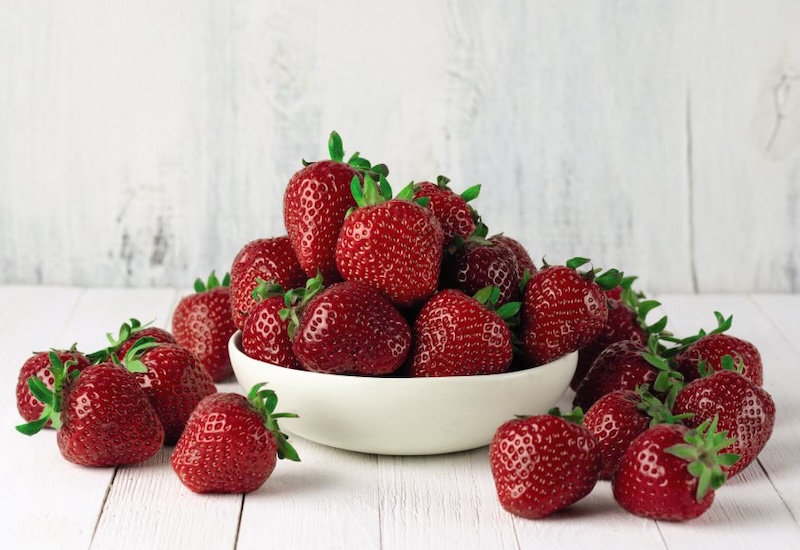
An RHS Award of Garden Merit winner, Strawberry ‘Cambridge Favourite’ is easy to grow
Image: Strawberry ‘Cambridge Favourite’ (Mid Season) from Suttons
Strawberry plants can be grown in containers, window boxes, garden beds or even hanging baskets. Choose a combination of early, mid and late-season varieties and you could be enjoying these sweet treats from April through to September. If you’re short on space, go for an everbearer variety that provides a regular supply of berries throughout the summer.
Strawberries require little care and attention, although you’ll need to protect the developing fruits from pests and birds. Available as plants or bare roots, they should be planted in August or late spring in a sunny, sheltered position. Once planted, your strawberries will continue to fruit for three years, after which time the yields usually drop and the plants will need to be replaced. The good news is that you can use the runners to create free plants but, if you need to buy replacements, bare root strawberries are particularly good value.
If you want an even earlier crop, try growing a few plants in your greenhouse or polytunnel. When fruiting is over, simply trim back the leaves to tidy things up. For more specific planting advice along with tips on how to care for your plants, read our complete article on how to grow strawberries.
Currant growing advice
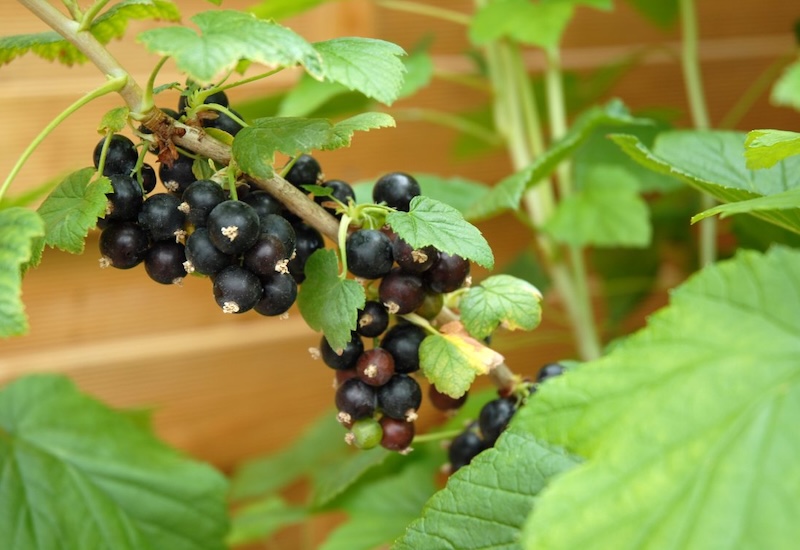
Blackcurrant ‘Ebony’ produces fruits up to twice as large as other blackcurrants
Image: Blackcurrant ‘Ebony’ from Suttons
Currant bushes are a wonderful addition to any garden and are pretty enough to warrant a place in a flower border if you don’t have a dedicated fruit bed. Blooming in April and May, they go on to produce delicious red, white or blackcurrants from mid-summer onwards.
While currants prefer full sun, they are one of the soft fruits that can also cope with some shade. Just make sure that you choose a sheltered spot away from cold winds, as the early blossom can be damaged by late spring frosts.
When it comes to planting, redcurrants and white currants should be planted at the same depth as the soil mark on the stem. Blackcurrants are the exception, as these should be planted slightly deeper – about 5cm lower than the soil mark – which encourages more stems to develop below ground level.
For more specific planting and pruning advice, read our dedicated article on how to grow currants.
Raspberry growing advice
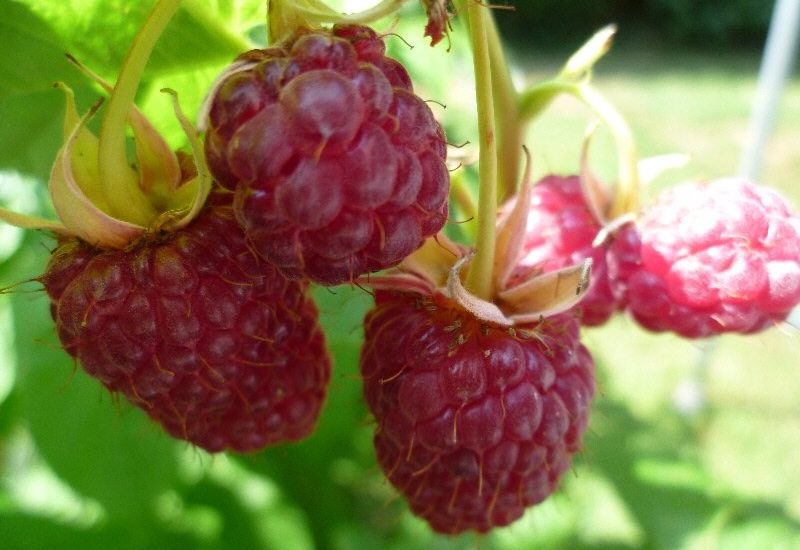
‘Joan J’ produces attractive red berries from late August to mid-October.
Image: Raspberry ‘Joan J’ (Autumn fruiting) from Suttons
Raspberry canes are one of the most popular and reliable soft fruits you can grow. After the initial set-up, which involves installing a post and wire system for support, they’re almost effortless. Simply prune them once a year and mulch them every spring.
Raspberries are available as summer-fruiting and autumn-fruiting varieties. If you’re looking for the least amount of effort, start with autumn-fruiting. They need less support and the pruning is incredibly simple – just cut the whole thing down to the ground in late winter and wait for new canes to shoot up in spring. With summer-fruiting varieties you should only prune the canes that have fruited, leaving any new shoots to grow on and bear next year’s fruit.
You can choose between red and yellow varieties of raspberry. In the unlikely event that you can’t eat them all fresh, they freeze well and are a welcome treat through the winter.
Read our detailed guides for more helpful advice: how to grow summer-fruiting raspberries and how to grow winter-fruiting raspberries. And if you want to see how other experienced growers look after their canes, see our best expert tips on growing raspberries.
Blackberry growing advice
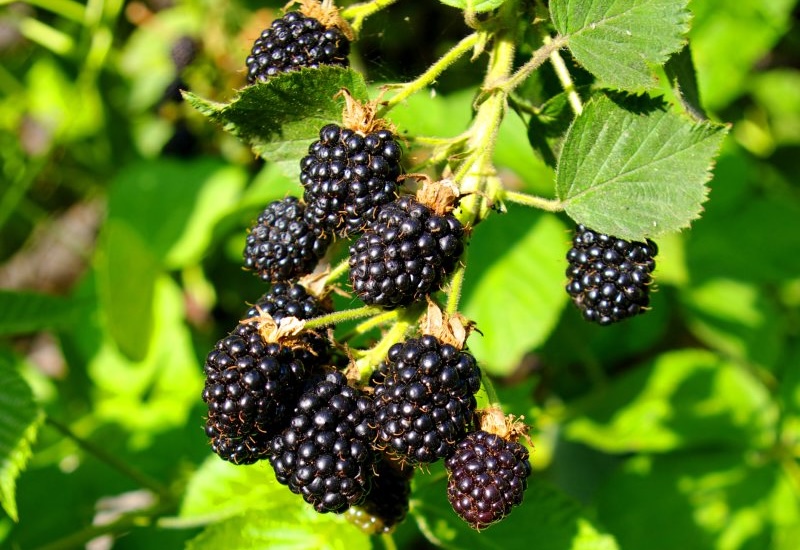
This garden variety is almost thornless and produces huge fruits
Image: Blackberry ‘Triple Crown’ from Suttons
When you think of blackberry plants, foraging from wild hedgerows often springs to mind. But most modern blackberry bushes are now thornless making them easier to prune, harvest and manage. The fruits are also larger and sweeter than those growing in the wild. If you’re short on space, you can buy dwarf varieties like Lowberry Blackberry ‘Little Black Prince’ for container growing, provided you have a sunny spot.
To grow blackberries in your garden or allotment, simply tie the canes to a support frame and prune back older canes once a year to encourage fresh new growth. They benefit from a feed each spring too, but otherwise need very little care.
Find more information about how to grow blackberries in our detailed guide.
Blueberry growing advice

These eye-catching pink blueberries have a lovely, sweet taste
Image: Blueberry ‘Pink Lemonade’ from Suttons
Blueberry plants are a beautiful addition to any garden, and can be grown in the ground, patio containers or your flower bed. Boasting delicately scented blossom in spring, juicy berries in summer and fiery autumnal foliage, blueberries are one of the most ornamental edibles. They do need slightly acidic soil to thrive so, if your garden is more alkaline, simply go for the container option. Just remember that blueberries like to be in moist soil at all times, so keep an eye on your pots and use collected rainwater to keep them happy.
The fruits are relatively expensive to buy in the supermarket – another good reason to grow your own. While blueberry bushes are self-fertile, if you plant a few together you’ll get a better yield.
Read our guide to growing blueberries for planting and pruning tips and check out some of the best expert advice on growing blueberries from those in the know.
Grape growing advice

Grape ‘Flame’ produces big clusters of refreshingly sweet and crunchy fruits
Image: Grape ‘Flame’ (Grafted) from Suttons
You can grow grape vine plants outdoors or in a greenhouse in the UK. They can be planted in the ground or in containers, and these climbers make an attractive focal point on south-facing walls, pergolas or trellis. Their large, exotic, palmate leaves provide exotic interest in the summer and welcome colour in the autumn.
The trick to growing grapes is lots of sun and regular pruning. For outdoor growing in the UK, wine varieties are your best option. Dessert grapes fare better in a greenhouse or conservatory. If you don’t have a huge amount of space, compact varieties like ‘Pixie™ grapes’ are a great patio option.
For more information on how to grow grapes including training and pruning techniques, read our specialist guide.
Kiwi growing advice

These delicious Kiwi fruits ripen in September
Image: Kiwi ‘Jenny’ from Suttons
The best way to grow a kiwi plant is against a south-facing sunny wall. A vigorous climber that can reach 10m if left unchecked, this vine needs lots of space and a strong trellis, pergola or wire support system against which to be trained. Espallier kiwi plants look particularly nice, and this is a good way to manage the twice yearly pruning regime once your plant is established.
Kiwis are exotic fruits that grow well in the UK and are hardy down to about -7C. Choose a self-fertile variety if you only have space for one. Otherwise you’ll need two plants to generate fruit.
Read our guide to growing kiwi fruit for more helpful tips.
Soft fruit care and harvesting tips
- Soft fruits need regular watering, especially in their first year and during dry weather.
- Apply a layer of organic mulch each spring to feed the plants and retain moisture in the soil. Keep it clear of the canes or stem.
- Prune your bushes or vines at the correct time of year.
- Protect your crops from birds with netting or a fruit cage.
- Harvest soft fruits on a dry day.
- Lay the fruits in a single layer in a large, wide container. Piling them on top of one another damages them, making them rot more quickly.
All gardens, however small, should have space for at least one soft fruit bush. Some can be trained against a wall, while others, like gooseberries, can be trained into standards leaving space for things like herbs to grow beneath. Others can be planted in containers or hanging baskets. Looking for more inspiration? See our best expert tips on growing soft fruits.
Last Updated on October 22, 2025 by Suttons Horticultural Team

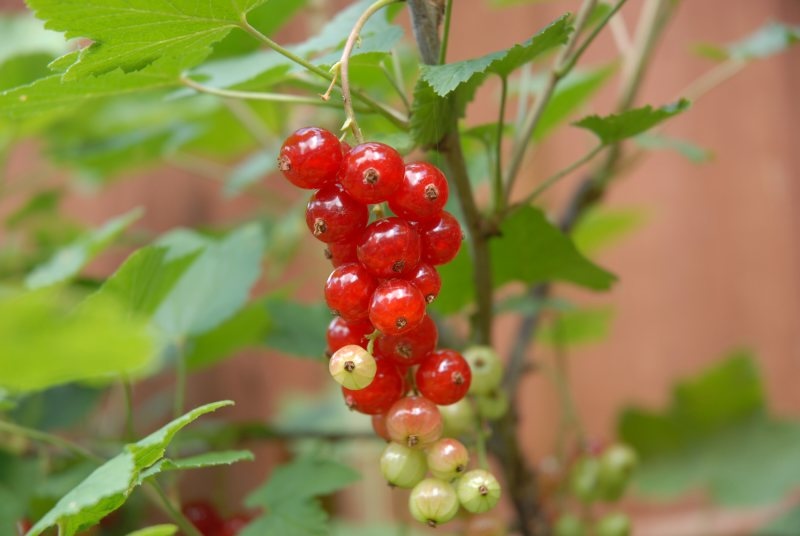

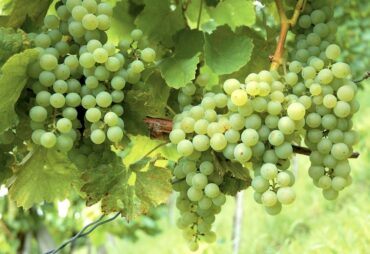


I never knew strawberries needed so much sunlight! Great tips—my garden’s going to be berry happy! Your guide on caring for fruit plants is packed with practical advice. Bookmarking this!